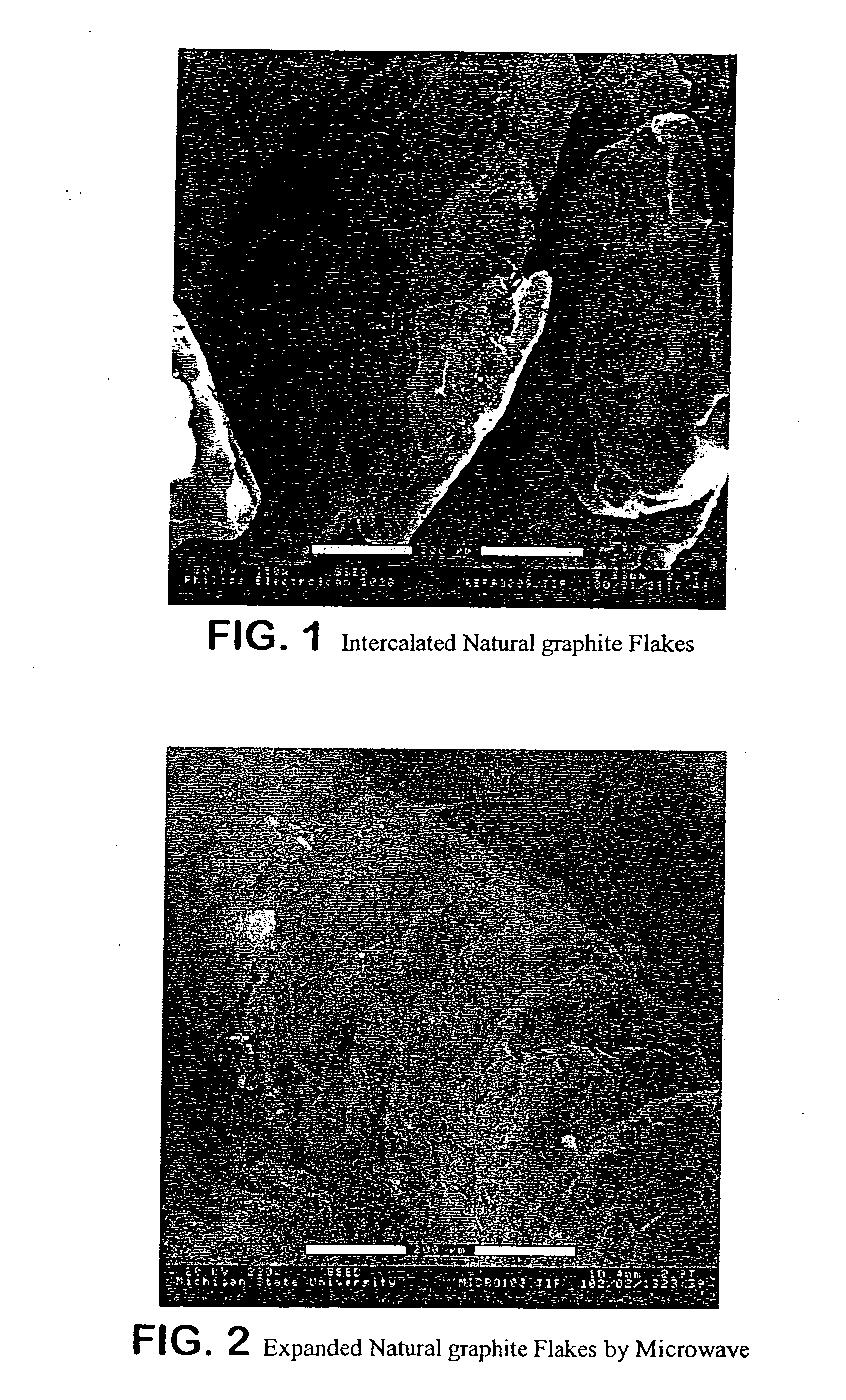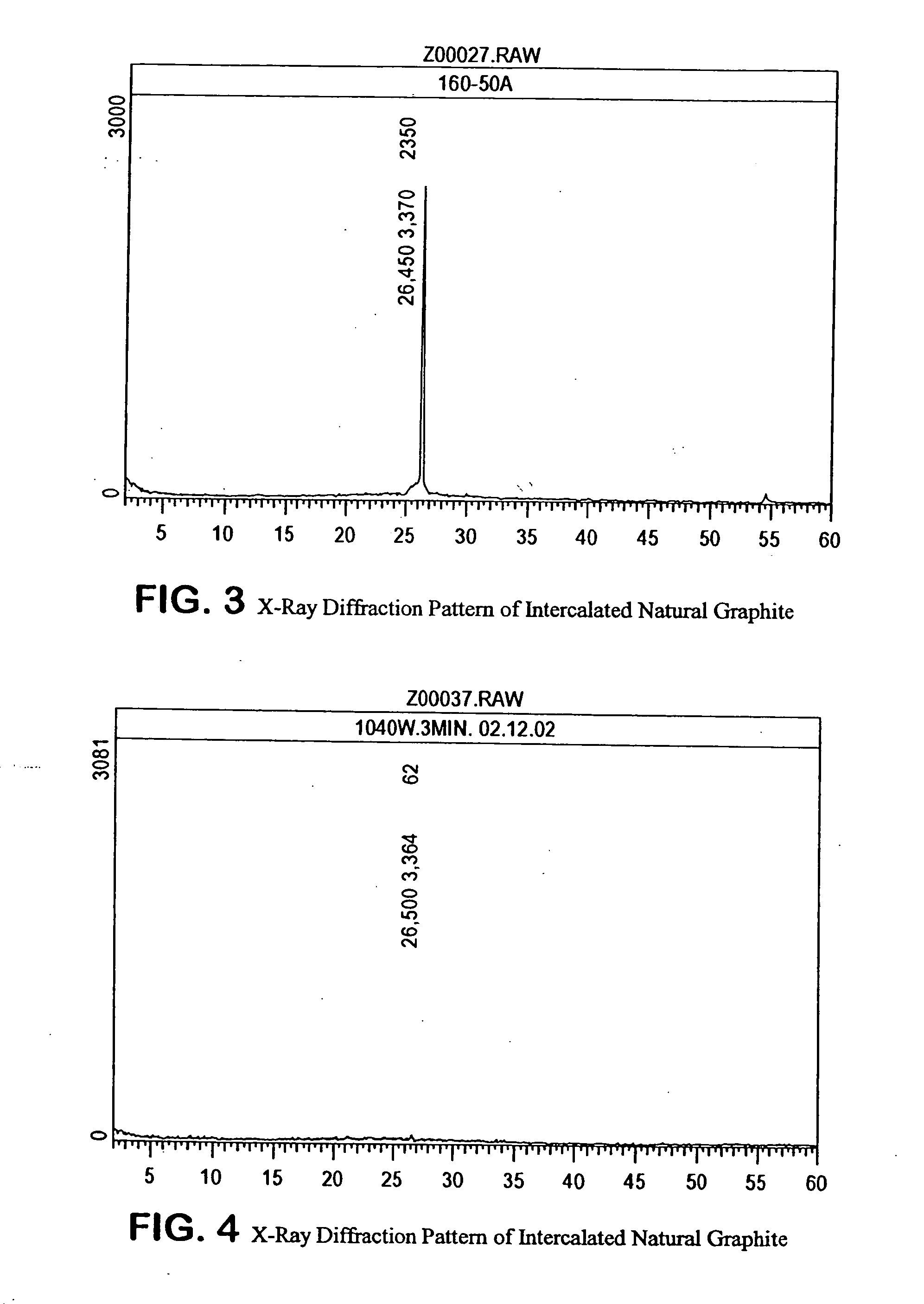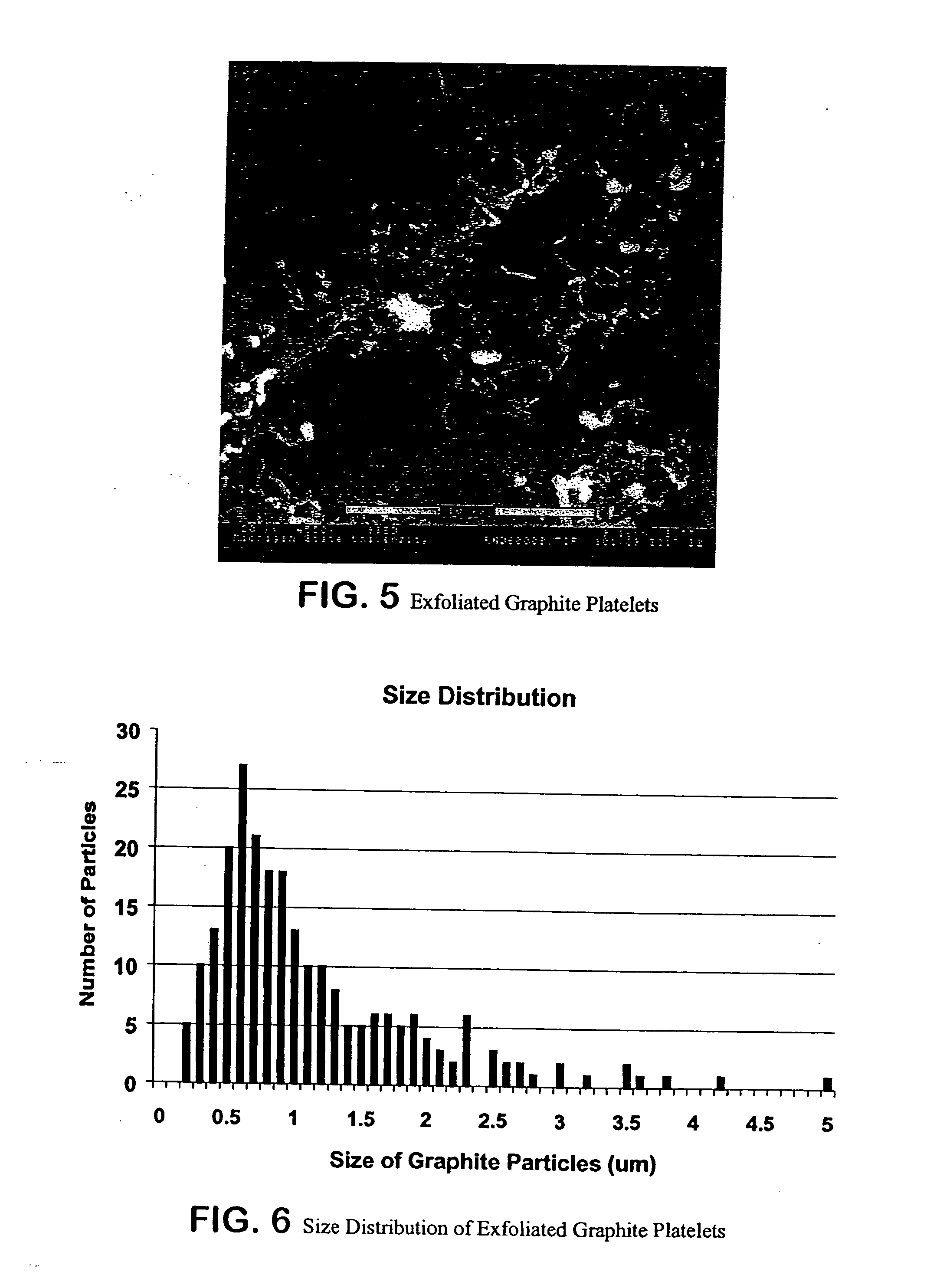Expanded graphite and products produced therefrom
- Summary
- Abstract
- Description
- Claims
- Application Information
AI Technical Summary
Benefits of technology
Problems solved by technology
Method used
Image
Examples
example 1
[0092] The graphite was expanded before the polymer is introduced. Intercalated graphite flakes were expanded by exposure to microwave energy, typically at 2.45 GHz frequency, for a few seconds to a few minutes in an oven. This process can be done continuously by using commercially available microwave systems with conveyors or batch-style process using individual microwave ovens. An automated continuous system is preferred from an economical point of view. In this case, the intercalated graphite flakes are first dispersed on a conveyor and introduced into the microwave oven, then processed under controlled conditions. Before or during this process additional chemicals / additives can be added to the intercalated graphite flakes to enhance the exfoliation, and / or apply surface treatments to the graphite flakes. After this process, washing and drying processes are applied, if necessary.
[0093] Typical starting materials are natural graphite flakes intercalated with oxidizing agents, but...
example 2
[0098] Graphite flake that has been treated in the sulfuric acid to intercalate the graphite with sulfuric acid in between the layers was used. A commercial source used in this invention is GRAFGUARD™ which is produced by UCAR Carbon Company (Lakewood, Ohio).
[0099] Samples of acidic, neutral or basic intercalated graphite (GRAFGUARD™ 160-50N, 160-50A or 160-50B from UCAR Carbon Company, Parma, Ohio) were mixed into pure epoxy resin such as diglycidylether of bisphenol-A (DGEBA) Shell Epon 828 or equivalent. The mixture was heated to temperatures of at least 200° C. at which time approximately the graphite experiences a 15% weight loss due to the release of the trapped sulfuric acid compounds. At the same time, the epoxy molecule entered the space between the graphite layers. A very large volume expansion was encountered which results in sorption of the epoxy in between the graphite layers. This expanded graphite was dry to the touch indicating that all of the epoxy has been sucked ...
example 3
[0101] Composite samples were fabricated using the following steps. First, 1, 2, or 3 vol % (1.9, 3.8 or 5.8 wt %) of the expanded graphite nanoplatelets of Example 2 were added into the epoxy systems. (Epoxide; Shell Chemicals, EPON™ 828 (DGEBA), Curing Agent: Huntsman Corporation, JEFFAMINE™ T403. The weight ratio of EPON™ 828 to JEFFAMINE™ T403 was 100 to 45.) Then the mixtures were cured by heating at 85° C. for 2 hours followed by 150° C. for 2 hours. The heating ramp rate was 3° C. per min. At the same time, a reference system was made that did not have expanded graphite platelets in it but was composed of the same epoxy system from the same batch. The mechanical properties of these samples were determined. These samples were investigated by flexural test. Also, the AC conductivity of these materials was measured.
[0102]FIGS. 7 and 8 show the results of the flexural test. The composite materials with 3 vol % graphite showed about 28% of improvement in modulus and 12% improveme...
PUM
| Property | Measurement | Unit |
|---|---|---|
| Length | aaaaa | aaaaa |
| Length | aaaaa | aaaaa |
| Length | aaaaa | aaaaa |
Abstract
Description
Claims
Application Information
 Login to View More
Login to View More - R&D
- Intellectual Property
- Life Sciences
- Materials
- Tech Scout
- Unparalleled Data Quality
- Higher Quality Content
- 60% Fewer Hallucinations
Browse by: Latest US Patents, China's latest patents, Technical Efficacy Thesaurus, Application Domain, Technology Topic, Popular Technical Reports.
© 2025 PatSnap. All rights reserved.Legal|Privacy policy|Modern Slavery Act Transparency Statement|Sitemap|About US| Contact US: help@patsnap.com



